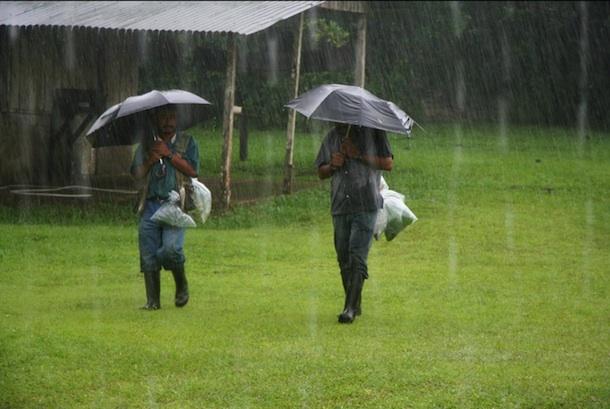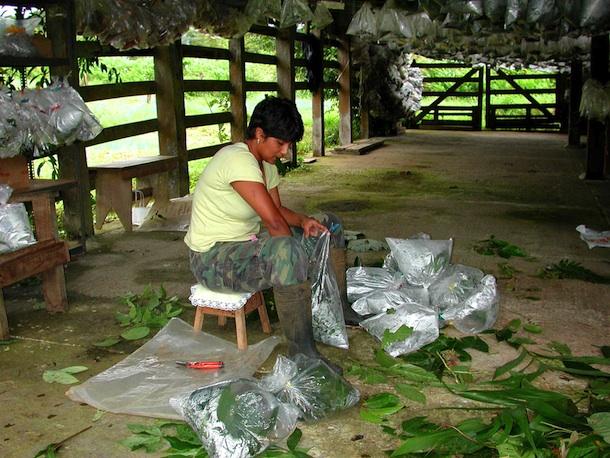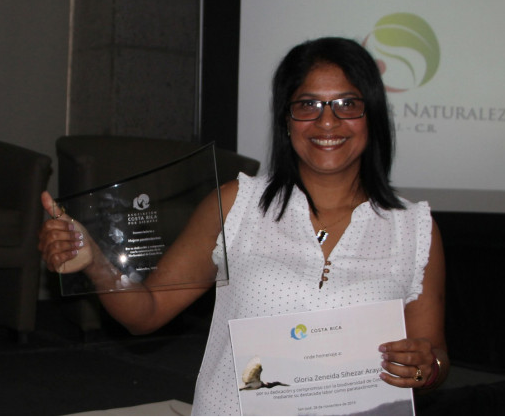Parataxonomists, rural Costa Rican residents who do formal field collection and species curation, are the platform for a serious bioinventory effort that has been ongoing since the late 1980s across the four ecosystems of Área de Conservación Guanacaste (ACG). The concept is borrowed from paramedics and paralegals – highly trained people that do quality field work, but are not formally educated doctors, lawyers, or in this case, classically trained taxonomists. Working across a dozen remote ACG field stations yielding thousands of insect specimens, the GDFCF team of parataxonomists generates a prodigious amount of species product that is transferred to a central laboratory in ACG. Tissue samples are then analyzed with the bioinformatic power of DNA barcoding to obtain precise species identities. GDFCF is a longstanding collaborator with the Biodiversity Institute of Ontario at the University of Guelph that conducts the sequencing of tissue samples received from ACG specimens, and all of the records are then transferred to the open source iBOL, the International Barcode of Life, also housed in Guelph. Together, this bioinventory system provides a new path to global bioliteracy combining the technique of DNA barcoding in combination with the field work and stready supply of species from the biologically-complex and still unknown biodiversity of ACG.
Operating across three forest ecosystems, one marine sector and twelve research stations within Area de Conservación Guanacaste (ACG), the parataxonomists are pioneers in a new type of local conservation career.

Their daily work is searching for wild caterpillars, rearing them until they are winged butterflies and moths, and documenting the caterpillars and the plants that each caterpillar eats with photographs and databases. All this is done with scientific care.


Because of them, the caterpillars of the ACG forests are the best studied by far anywhere in the world’s tropics.
But it is much more than that.
For the parataxonomists themselves, the career is a release from the life of poorly educated rural people – for men, menial labor in agriculture or on local fishing boats, for women, raising children, getting food, cooking and cleaning in a never-ending competition with other women for the attention and support of men with salaries. Parataxonomy requires constant learning, and they are respected for using their brains.
Parataxonomy, like paramedic and paralegal, requires focused training in some of the skills – and the ethics – of a full professional, but without the long years of university and graduate study. In fact, some of them have only a primary school education or less. For some, the training was a bootcamp 6 month course, for others a long apprenticeship to experienced members. The parataxonomists not only find and rear and document caterpillars, but can identify many of the enormous number of species of caterpillars and plants that they interact with, explain the specialized clues they look for to find any species, and now have begun to write species accounts with their own text and photographs for the web.
But it is much more than that.
Parataxonomists are hybrids between cultures that have traditionally been distinct, with little information flow and sometimes not even much shared human understanding or respect. On the one hand they are in the world of science, communicating and providing a wealth of new data to global experts in taxonomy and ecology. On the other, they are a part of the neighboring communities, part of the school parents and grocery shoppers and churches and clinic patients with their neighbors, who may have known them all their lives.

Gloria Sihezar, November 2019, receiving an award, along with all the women parataxonomists, for her contribution to biodiversity conservation. Gloria has been a parataxonomist for 27 years. Of the award, she said: “It was a surprise, with so many years in this work; we are filled with pride and satisfaction. We are very grateful to Dan and Winnie and ACG, because without them it would not have been possible. We enjoyed the night very much because we felt famous at that time… We all feel pride because our work is silent every day but today it was seen and recognized.”